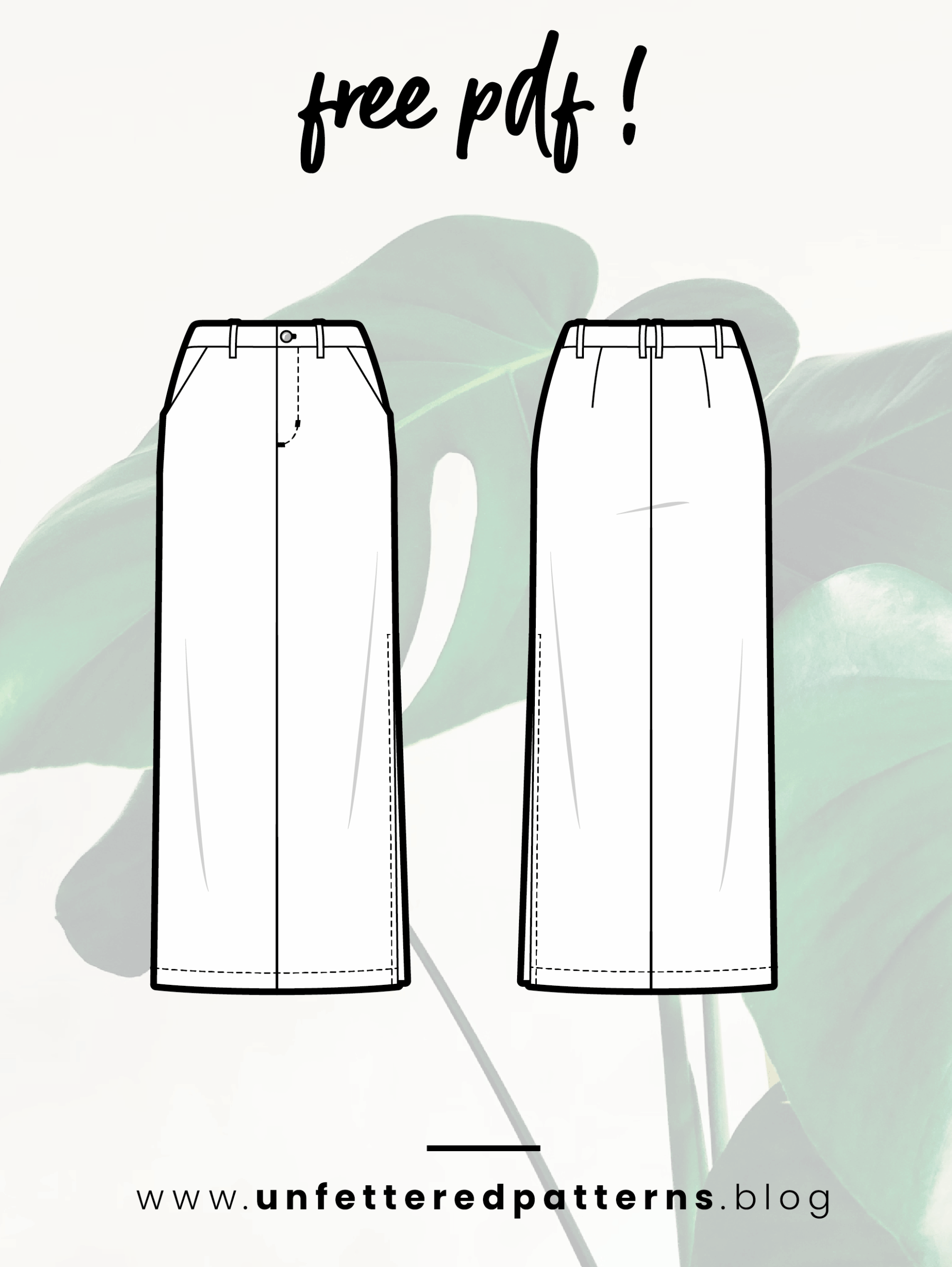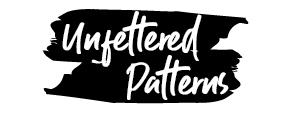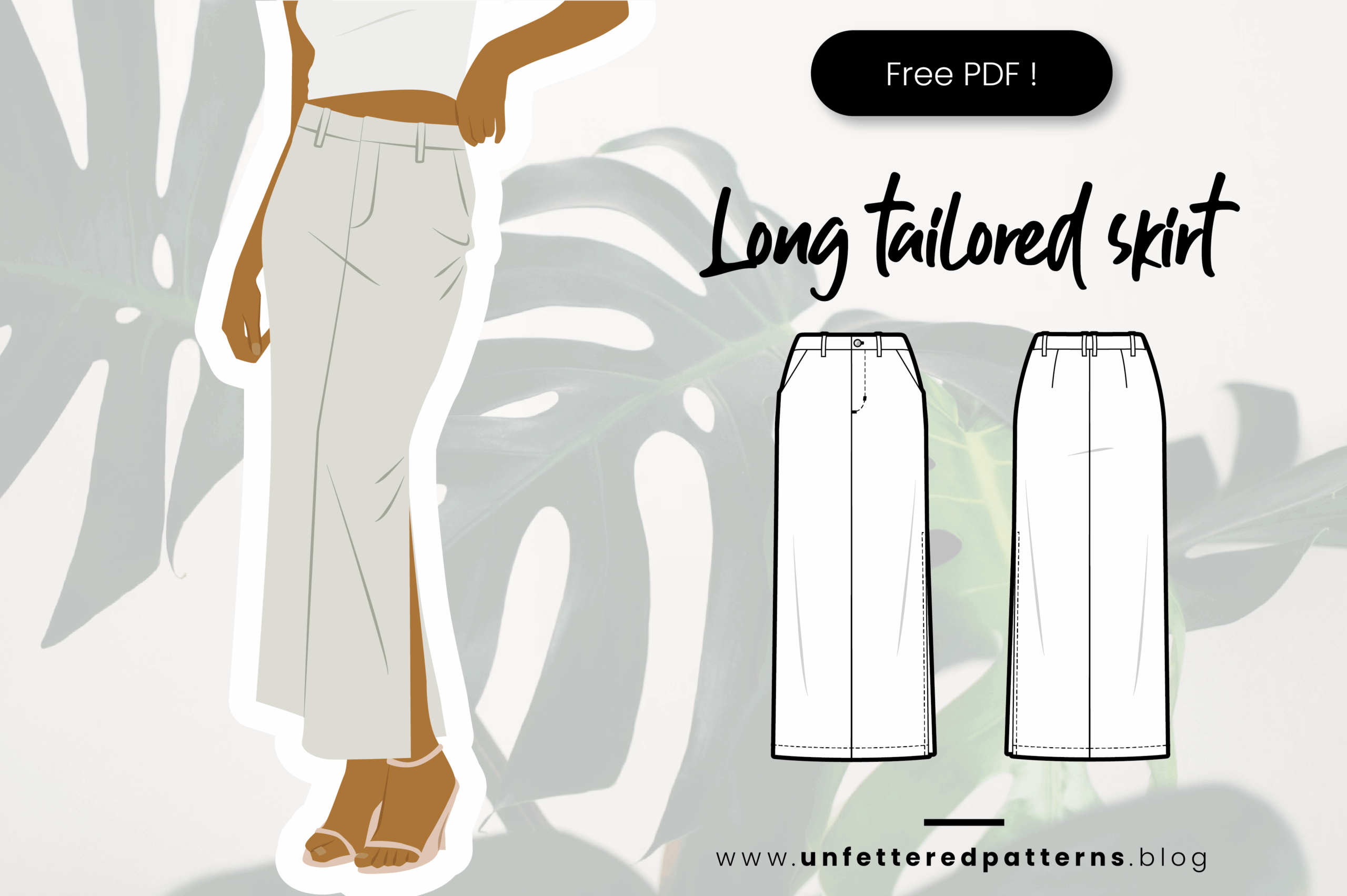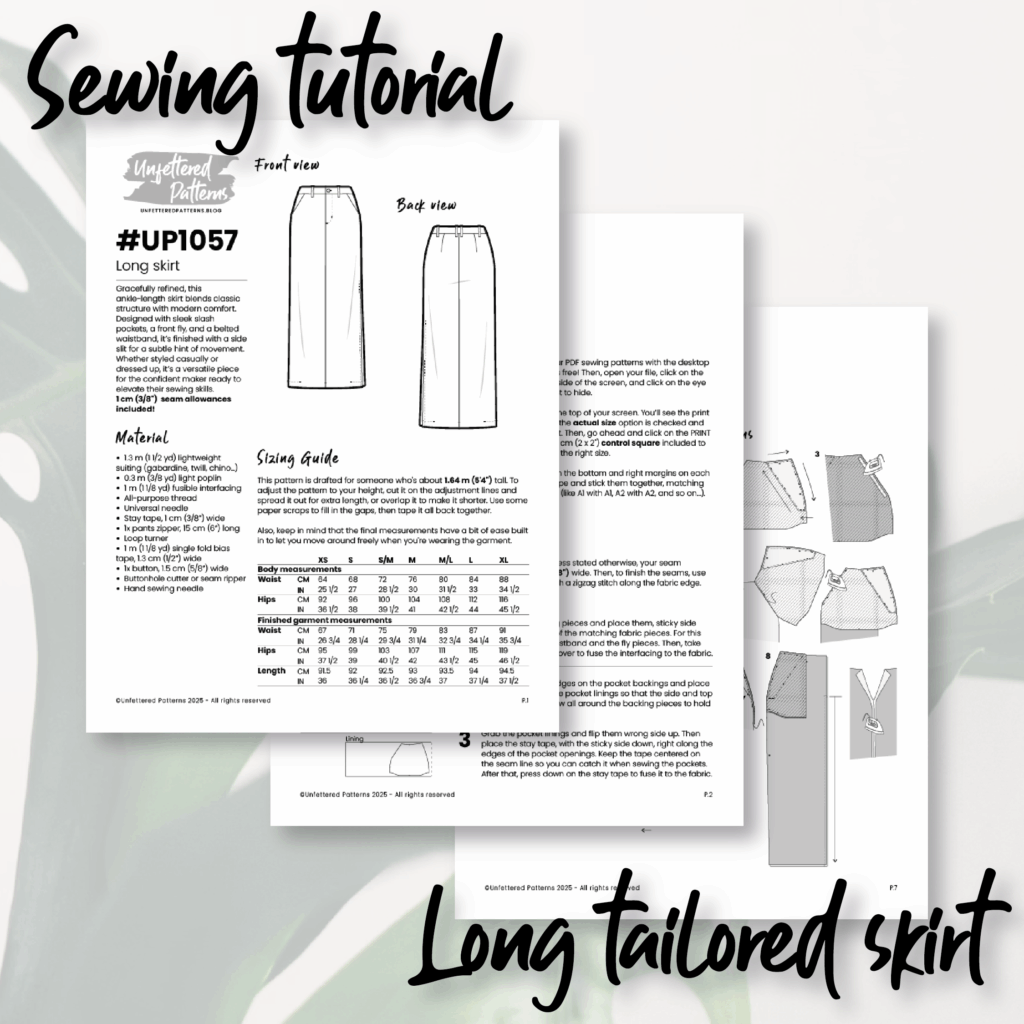Note: If you’re viewing this post in a language other than English, your browser might be using automatic translation. While that’s helpful, some words or phrases might not come through exactly as intended. Thanks for understanding!
Gracefully refined, this ankle-length skirt blends classic structure with modern comfort. Designed with sleek slash pockets, a front fly, and a belted waistband, it’s finished with a side slit for a subtle hint of movement. Whether styled casually or dressed up, it’s a versatile piece for the confident maker ready to elevate their sewing skills.
Download the FREE PDF sewing pattern, and sew your own handmade skirt now!
1 cm (3/8″) seam allowance included!
Material
- 1.3 m (1 1/2 yd) lightweight suiting (gabardine, twill, chino…)
- 0.3 m (3/8 yd) light poplin
- 1 m (1 1/8 yd) fusible interfacing
- All-purpose thread
- Universal needle
- Stay tape, 1 cm (3/8”) wide
- 1x pants zipper, 15 cm (6”) long
- Loop turner
- 1 m (1 1/8 yd) single fold bias tape, 1.3 cm (1/2”) wide
- 1x button, 1.5 cm (5/8”) wide
- Buttonhole cutter or seam ripper
- Hand sewing needle
Important: Fabric requirements are based on a fabric width of 150 cm (59″). If your fabric is narrower, additional yardage may be required.

Download the free PDF sewing pattern…
… and once you’re done, share a photo of you wearing proudly your new handmade skirt with #unfetteredpatterns or tag us @unfetteredpatterns!
Need help to print your pattern? Check our detailed tutorial here! Also, find out how you can customize your pattern for A0 printers and projectors here.
Need help completing the project?
Check our Kofi store for printable sewing tutorials, including detailed sewing instructions, line sketches, a sizing guide, and a list of the materials needed!
Sizing Guide
This pattern is drafted according to the following body measurements. Standard height is 1.64 m (5.4 ft). Check this tutorial if you want to add sizes to your pattern!
| XS | S | S/M | M | M/L | L | XL | |
| Bust | 85 cm (33 1/2″) | 89 cm (35″) | 93 cm (36 1/2″) | 97 cm (38″) | 101 cm (39 1/2″) | 105 cm (41″) | 109 cm (42 1/2″) |
| Waist | 64 cm (25 1/2″) | 68 cm (27″) | 72 cm (28 1/2″) | 76 cm (30″) | 80 cm (31 1/2″) | 84 cm (33″) | 88 cm (34 1/2″) |
| Hips | 94 cm (36 1/2″) | 96 cm (38″) | 100 cm (39 1/2″) | 104 cm (41″) | 108 cm (42 1/2″) | 112 cm (44″) | 116 cm (45 1/2″) |
Finished garment measurements
Keep in mind that the final measurements have a bit of ease built in to let you move around freely when you’re wearing the garment.
| XS | S | S/M | M | M/L | L | XL | |
| Waist | 67 cm (26 3/4″) | 71 cm (28 1/4″) | 75 cm (29 3/4″) | 79 cm (31 1/4″) | 83 cm (32 3/4″) | 87 cm (34 1/4″) | 91 cm (35 3/4″) |
| Hips | 95 cm (37 1/2″) | 99 cm (39″) | 103 cm (40 1/2″) | 107 cm (42″) | 111 cm (43 1/2″) | 115 cm (45″) | 119 cm (46 1/2″) |
| Length | 91.5 cm (36″) | 92 cm (36 1/4″) | 92.5 cm (36 1/2″) | 93 cm (36 3/4″) | 93.5 cm (37″) | 94 cm (37 1/4″) | 94.5 cm (37 1/2″) |
Sewing Notes
Here are some tips we recommend for a successful sewing project:
Fit and style
- First up, choose a size based on your hips. Take a look at the body measurements chart to guide you. If your waist is calling for a different size, widen or narrow down the pattern at the waist to fit your measurements.
- On the finished garment measurements chart, you can also see how long the garment is and if it’ll work for your height. It’s a good idea to compare the length with something similar you already own. Just keep in mind that this skirt is ankle-length, not full-length.
Fabrics
- This pattern works only with non-stretch fabrics. Going for a lightweight fabric is a smart move to keep things from getting too bulky. For the ultimate summer vibe, I’d say go for natural fibers like cotton, silk, or linen since they keep you nice and cool.
- Try to choose a fabric and lining with similar fiber content. That makes it easier to wash and care for later. For example, if you’re using 100% cotton twill, stick with a 100% cotton lining.
- Choose a lightweight interfacing so it doesn’t add bulk to the fabric. Also, grab a color that’ll blend right in with light-colored fabric!
Cutting out
- Before you start cutting your fabrics, wash and dry them like you’d do for the finished piece. Keep in mind the fabric type and what it’s made of so you choose the right cleaning method (like how hot the water should be or what kind of cycle to use…). Plus, the dyes used on certain fabrics tend to bleed when washed, so wash yours separately, or with similar colors.
- After you wash and dry the fabric, give it a good press to get rid of any creases. Just make sure your iron is set to the right temperature for the fabric. Generally, synthetic fibers like acrylic, spandex, or polyester should be pressed on low heat, while natural fibers like cotton, wool, or linen can handle higher heat.
- When you’re set to cut the fabric, just fold it lengthwise right sides together. Make sure the fold is straight and doesn’t twist up. If it does, unfold it and refold until it’s nice and flat. Then, lay out the pattern pieces so the grainline runs parallel to the selvages.
- When you’re set to cut the fabric, place it on your work surface right side up, unfolded. Then, lay out the pattern pieces, printed side up, so the grainline runs parallel to the selvages.
- Make sure you don’t cut the notches too long; aim for them to be around 0.3-0.4 cm long (1/8″). Also, be sure to also trace all the pattern markings on the fabrics with a tailor’s chalk or a fabric marker.
Sewing
- Before you start sewing, grab a scrap piece of fabric and try out a few stitches to see how the tension and stitch length look. If the seam isn’t turning out great, try re-threading your machine first. Still not working? Then go ahead and adjust the tension. As for stitch length—thicker fabric usually needs longer stitches, so adjust that as needed. And if your stitches are skipping, switch to a new needle or to a bigger one.
- This project is labelled expert level, making it an excellent choice for those looking to develop their sewing skills further.
- If you’re unsure how to sew buttonholes, just take a look at your sewing machine manual. The process can differ from one machine to another.
Good luck with your sewing project!
You can support me on Ko-Fi! Every little bit helps cover the costs of pattern-making software, illustration tools, fabrics, threads, and more. If a donation’s not possible, no worries — you can still support the blog by liking, sharing, and commenting on my posts. Thanks so much!


